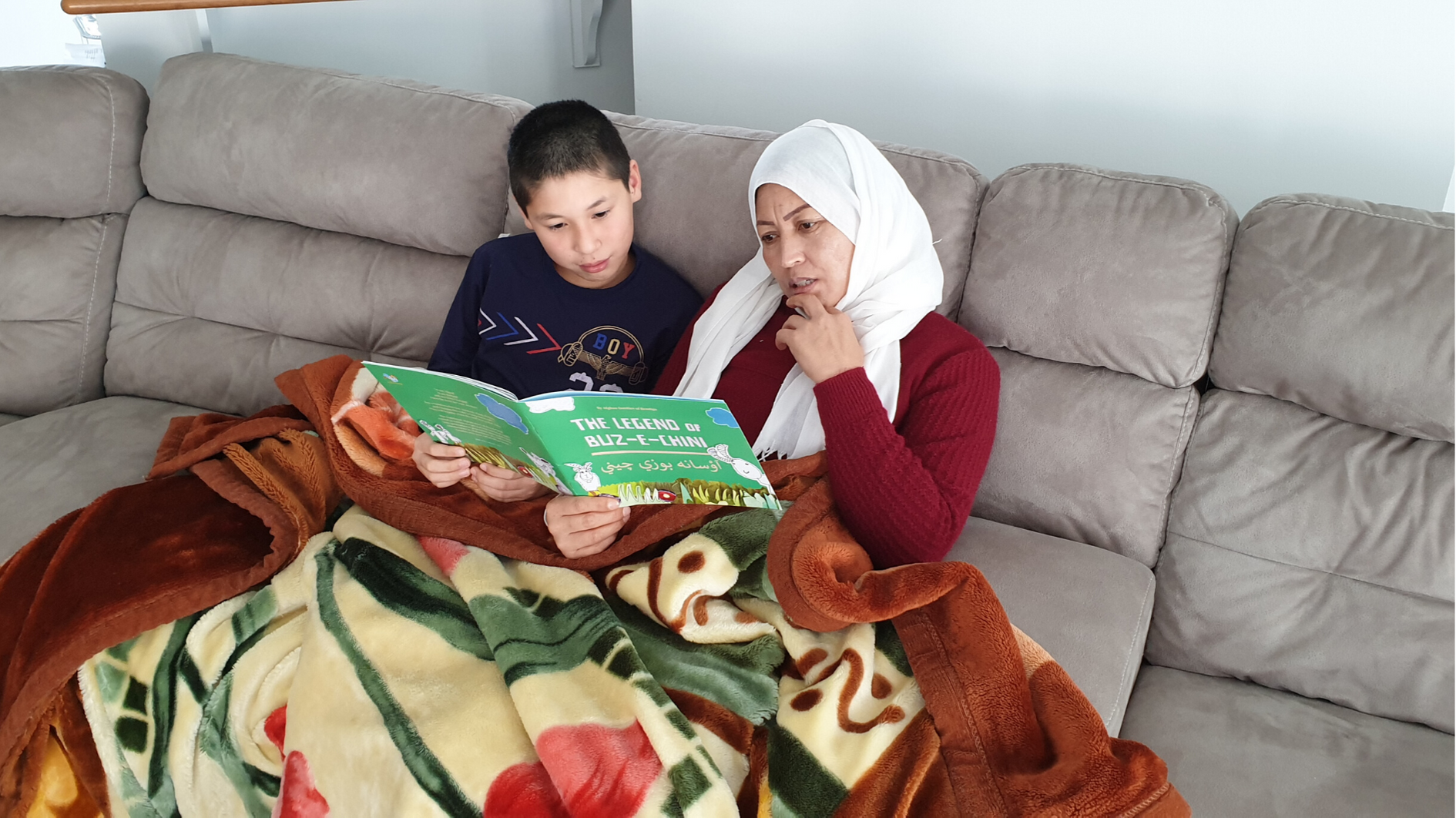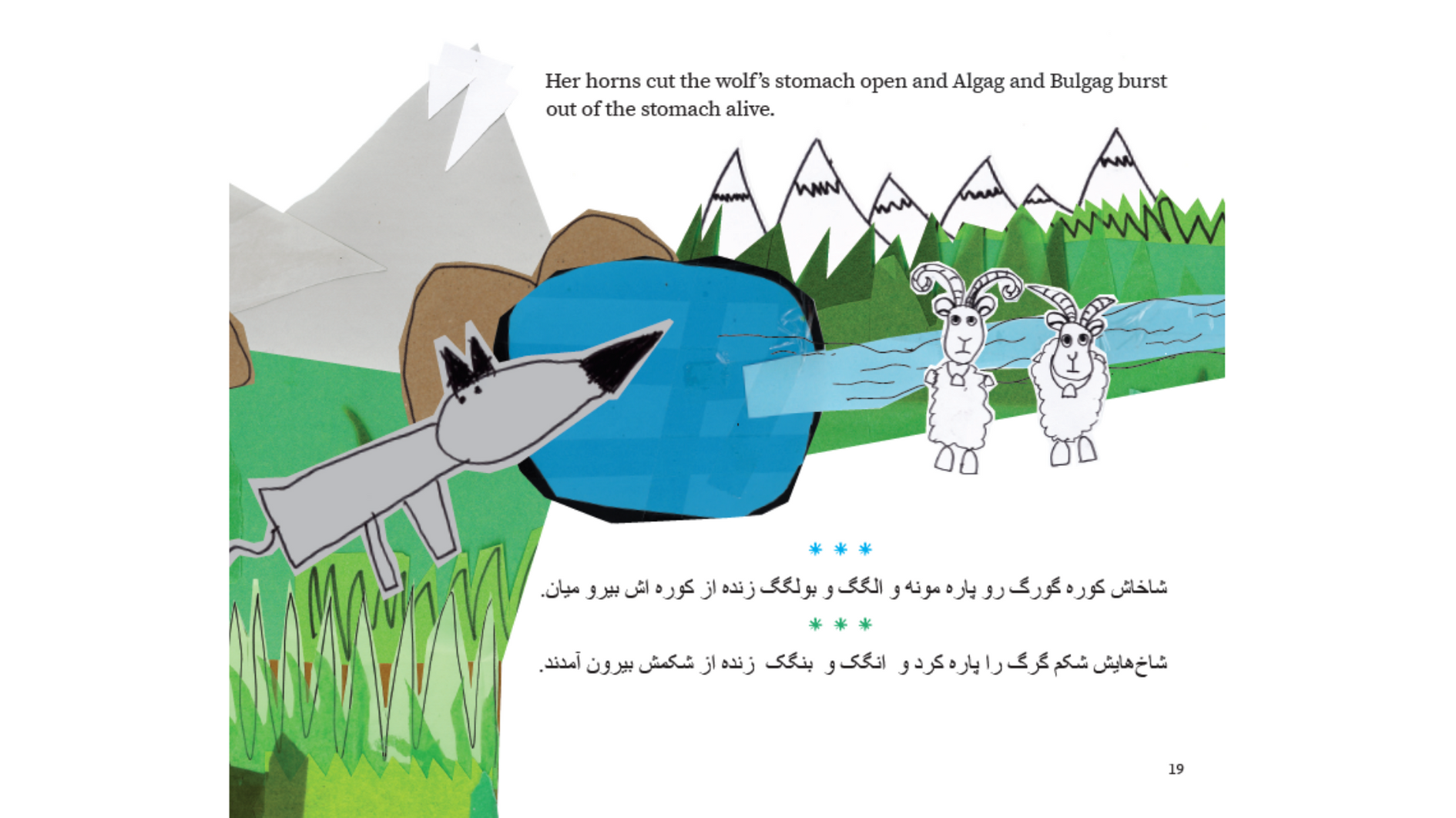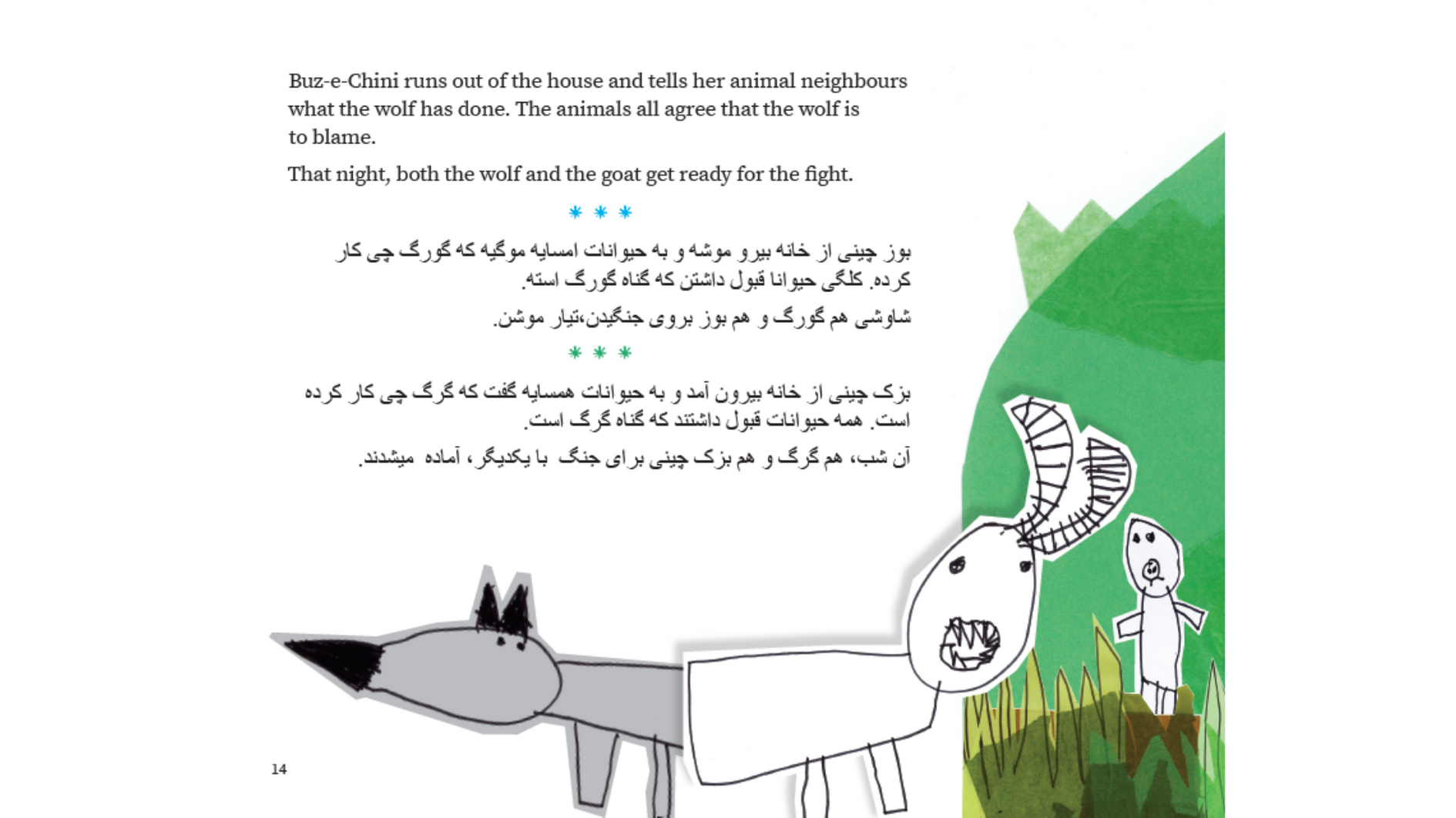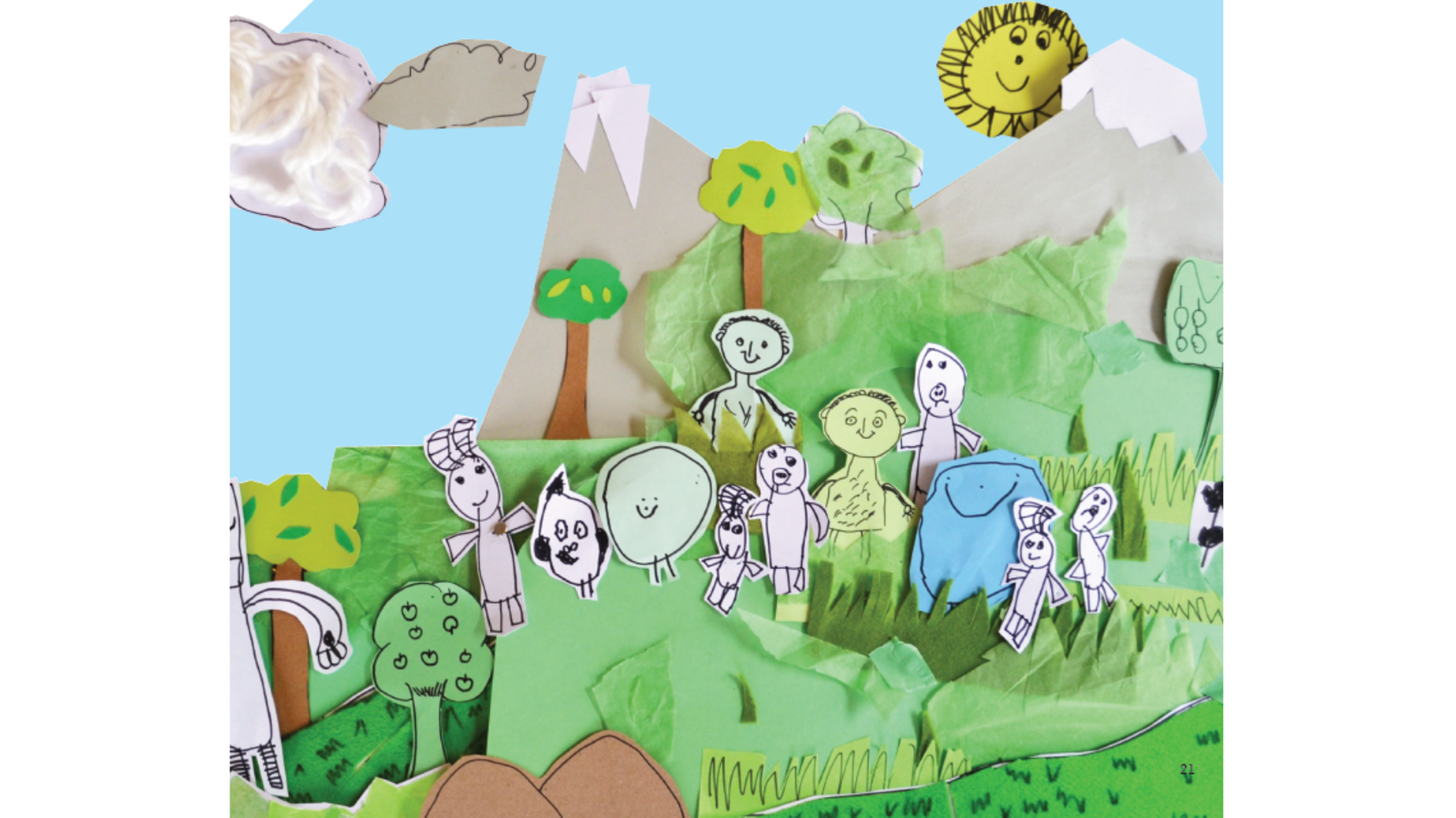The Sapling co-editor Nida Fiazi reviews the first picture book retelling of her favourite childhood folktale Buz-e-Chini. She recalls the nightmare that revived Afghan oral storytelling traditions within her family, and shares how this helped improve her oral literacy as a bilingual child.

The Hazaragi folktale Buz-e-Chini is the story of my childhood. Set in rural Afghanistan, the tale centres around a mother goat determined to keep her three babies safe from the cunning village wolf. Growing up, it was the only story my mother would narrate to me. She didn’t know how to read, having never been to school, but she’d heard the story of Buz-e-Chini as a child and knew it off by heart.
The first time my mother ever narrated the tale to me was after I’d woken up crying from a traumatic nightmare in which a witch was trying to eat me up. Listening to how Buz-e-Chini saved her own babies from a similar fate was indescribably comforting. From that day forward, I started requesting the tale almost every night. Years later, when I saw that it had been made into a trilingual (English, Hazaragi, Dari) picture book I was beyond excited! The Legend of Buz-e-Chini by Kids Own Publishing in Australia brought together the Afghan children and families of Bendigo to tell their people’s folklore and share it with the world.
Growing up it was the only story my mother would narrate to me.
One of the first things I noticed when reading was the layout of the text. The English text is presented first (since it is created mainly for English-speaking readers), followed by the Hazaragi and then Dari text. It did not appear that one language was prioritised over the others (which is always great to see) as all three languages were about the same size and in similar fonts. However, I did find the colour-coded asterisks that separated each language a little difficult to follow. I constantly needed to refer back to the key on the inside of the front cover which made for a slightly tedious reading experience.

The original folktale was transmitted orally which means that many different iterations of it have, and continue to, exist. The tale was shaped over and over again by the various tongues that told it, but one thing that remained constant across most, if not all iterations was its musicality. The beginning of Buz-e-Chini is so ripe with assonance and rhyme, it almost feels like hearing someone recite a tongue-twister. But that is what makes it so charming. As a child, and a bilingual one at that, I didn’t understand every word of the story. However, I had so much fun just hearing the rhymes roll off my mother’s tongue that it didn’t matter. I never got tired of the story and over time, through sheer repetition, I was able to advance my vocabulary in Hazaragi.
Unfortunately, that musicality is largely missing in this retelling, especially in the English version. Besides the names of the three baby goats ‘Algag, Bulgag and Chulgag’, there is no discernable rhyme. The Hazaragi and Dari versions do have the odd rhyme here and there, for instance when the wolf is trying to trick the baby goats into thinking he is Buz-e-Chini he calls out, ‘Algag ma! Bulgag ma! Wa Chulgag khordtarak ma!’ (My Algag! My Bulgag! And my little/smallest Chulgag!) but that’s about it.
I never got tired of the story and over time, through sheer repetition, I was able to advance my vocabulary in Hazaragi.
I also couldn’t help but notice some inconsistencies and inaccuracies in the Hazaragi text. There were a few instances where Persian/Farsi words were used instead of Hazaragi words such as ‘meeram’ (Farsi for ‘I’m going’) which was later replaced with the more accurate ‘morum’ (Hazaragi for ‘I’m going’).
The English text reads methodical and very to-the-point which kind of took the fun out of the entire story. The choice of dialogue tags made this worse. Besides the two occasions where the wolf ‘yells’, the characters usually just plainly ‘said’ or ‘asked’ things. This lack of emotion made the characters feel a little 2D. It seems that there was more focus and effort put into trying to stay true to the folktale and making sure it made sense, than retaining the special little things that made the tale so charming to begin with.

One of my favourite aspects of this book are its illustrations. All of the artwork was created by Afghan children and their families in workshops and then put together using the collage technique. Trying to identify the different materials used in each spread was kind of like playing a game of hidden objects. I was able to spot marker drawings, tissue paper flowers, felt and cardboard houses and wool clouds just to name a few!

My only major gripe is that the illustrations depict quite Western representations of objects in the story. For instance, the houses in this book look like ones that children here in Aotearoa and in Australia would grow up drawing: triangle roofs, square body and windows, and a rectangular door. But the majority of houses in Afghanistan, where the tale is set, do not look like that. They are flat-roofed, rectangular, brown mud houses. Especially in the more rural areas where I imagine this story taking place. I was also disappointed to see no illustrations of the tandoor (underground oven) that Chulgag hides in to escape from the wolf, given its significance to the story and to Afghan culture in general.
Trying to identify the different materials used in each spread was kind of like playing a game of hidden objects.
All things considered, I’m really happy that this book was published. I love, love, love that Afghans were involved in the creative process and that they were given the opportunity to tell this story themselves, in their own languages. I have always wished that the tale of Buz-e-Chini existed in a written form, in Hazaragi and English, so that children (both Afghan and otherwise) could access the story that was so dear to my heart. So, though it is flawed, I’m really grateful that this resource exists.

Nida Fiazi has worked in the New Zealand book industry for the past five years as a poet, editor, reviewer, and advocate for better representation in literature. She is a Hazara Kiwi Muslim and a former refugee based in Kirikiriroa. Her work has appeared in Issue 6 of Mayhem Literary Journal, the anthology Ko Aotearoa Tātou | We Are New Zealand, and Poetry NZ Yearbook 2021. She is currently penning an opera with Tracey Slaughter.



